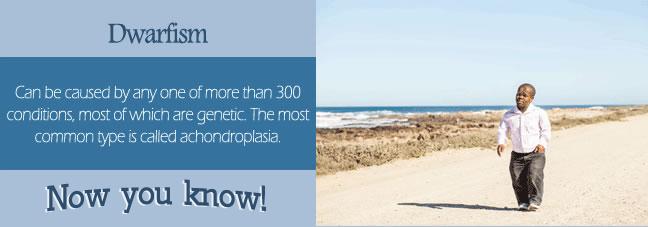While most people don’t let their dwarfism hold them back, the condition often comes with many other health problems that can cause physical and financial hardship. If you find your dwarfism is more than you can handle on your own, the United States Social Security Administration (SSA) might be able to help you.

Social Security Disability Insurance (SSDI) is paid by Social Security taxes, so you are only eligible if you’ve paid into those taxes, usually for five of the last ten years. Once you are approved for SSDI, you are automatically eligible for Medicare 29 months after your reported onset date (two years plus the 5-month waiting period). For children or young adults with no work history, Supplementary Security Insurance (SSI) is the better option. There are strict financial limits, $733 of countable income for an individual with less than $2,000 in assets or $1,100 for a couple with less than $3,000 in assets. SSI also gives you access to Medicaid in most states.
Further Reading: What Is SSI?
Dwarfism – Condition and Symptoms
While it’s likely that dwarf parents will have a short-statured child, it’s not definite. Most dwarf children are actually born to normal size parents, and many dwarf parents have normal sized children.
There are over 300 conditions that could cause dwarfism, most being genetic. Genetic causes are apparent at birth, usually because of a gene mutation in the womb or an inherited gene. It’s also possible to develop dwarfism in infancy or early childhood if the child does not get the necessary nutrients.
Genetic forms of dwarfism are categorized into two types. In short-limb dwarfism, the limbs are short and the torso is average size. Short-trunk dwarfism is characterized by average sized limbs and a short torso. Each type of dysplasia is often accompanied by other physical deformities, such as large heads, small hands, reduced muscle tone, club feet and cleft palate. Dwarfism that’s caused by metabolic or hormonal disorders usually result in proportionate short stature, unlike most dysplasias.
There are many health complications associated with dwarfism present in children and adults, including delayed development and trouble with daily motor skills and joint flexibility. It can cause loss of hearing or vision, bowed legs, a curved spine, early arthritis, crowding of teeth, back or leg pain, and problems with breathing and weight.
Filing for Social Security Disability with Dwarfism
For children, the SSA evaluates claims medically under growth impairments. Your child's height needs be either at least 15 percent lower than the standard average or persistently lower than the third percentile.
In adults, disability is typically evaluated by a blend of other medical conditions caused by dwarfism, including loss of vision and hearing, disorders of the heart and spine, sleep apnea, or arthritis. Often, these conditions may not be enough for approval alone, so you must also have evidence of functional limitations. If the SSA believes there is no gainful work you can do based on your education, skills, and age, then you may qualify under a medical-vocational allowance.
For a disorder such as dwarfism, it's especially important to include statements from doctors, managers, family, and yourself explaining your daily activity and workplace limitations. You also need to include any medical tests, treatment summaries, and lab reports for any others complication that affects you.
Dwarfism and Your Social Security Disability Case
Your chances of approval are much more likely with the help of a qualified disability lawyer, especially if your initial claim was denied. Only about thirty percent of cases are approved at the initial claim stage, so many applicants must go through the appeals process. A lawyer can help you get medical tests result, talk with your doctor to provide a better statement, communicate with the SSA in your place, help you include all necessary medical and limitation information, and represent you if your case goes in front of a judge.